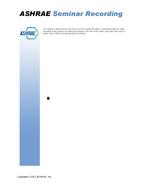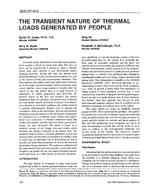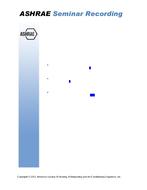Airborne transmission of infectious particles consists of droplets that are expelled by sneezing, coughing or otherwise distributed into the air. Although the liquid evaporates, the residue may remain in the air for long periods of time depending on factors such as particle size, density, velocity, force of expulsion, humidity and rate of air flow. Air currents, aided by the ventilation system, help to spread them over a wide area. The disease-causing organisms then are inhaled by or come to rest on a susceptible person who is subsequently infected.
This study simulated the infectious particle generated from patients cough using complex particle tracking methodologies with variables such as particle trajectory and air velocity over a specified time to determine changes in distribution of the infectious particles as they travel in the air. The study is the first of its kind to examine different aspects of the cough/ventilation system interaction.
Computational Fluid Dynamics was performed to model and assess the interactions of exhalation flows of the cough particles with ventilation flow in a hospital suite. The results show that the low exhausts outperform the other exhaust locations in terms of particle removal and the remaining particles around the bed.
However, from this study, it appears that 12 ACH with low exhausts exhibits the lowest number of particles remaining in the room 5 minutes after a cough. Thus it can be concluded that 12 ACH is a more effective air flow for a patient room than 16 ACH This study can be used to assess the frequency of infection occurrences and to provide practical approaches to improve indoor air quality and reduce nosocomial infections in the hospital setting.
Citation: IAQ Conference: IAQ 2010: Airborne Infection Control
Product Details
- Published:
- 2011
- Number of Pages:
- 10
- File Size:
- 1 file , 630 KB
- Product Code(s):
- D-IAQ2010-C40


